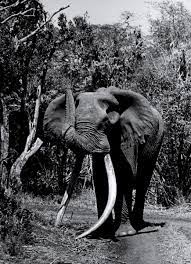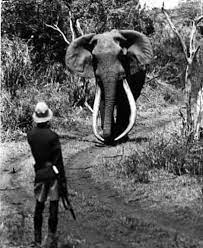Ahmed the Elephant became an imposing creature who roamed the barren Kenyan region for over five years. He was born in 1919 inside the lush forests of Mount Marsabit and quickly distinguished himself from his friends with his high-quality stature and two ivory tusks that grew to report-breaking lengths.
Ahmed became an elephant who roamed the forests of Mount Marsabit in Kenya. He was born in 1919 and became known for his astonishing tusks, which were the longest and heaviest ever recorded in Africa. Each of his tusks weighed over one hundred fifty pounds.
Ahmed has become a symbol of Kenya’s herbal splendor and has even been given special protection by the U.S.U.S.S..’s first president, Jomo Kenyatta. He has also become a famous tourist attraction, and many people come from all over the world to see him.
Ahmed became regarded as climbing the hill backward due to his long tusks. Google Arts & Culture cited: “But legend remembers a story of an Elephant whose tusks had been seeing you later that he could most effectively climb hills by way of taking walks backward!”
Ahmed quickly became an image of Kenya’s natural splendor. He was featured in many magazines and documentaries and became a popular tourist attraction.
In 1970, Ahmed featured in many T.V. projects, such as an A.B.C. series and a documentary.
Ahmed also became a reminder of the importance of conservation. His tusks were a precious commodity, and poachers had always searched for them. The Kenyan authorities decided to defend Ahmed from poachers and made him a symbol of their dedication to conservation.
Ahmed’s story resonated past Kenya’s borders, inspiring conservation efforts throughout Africa and the sector. His photo graced the covers of magazines and books, and his life story captivated audiences worldwide. He has become an image of the demanding situations faced by means of elephants and the pressing need to shield their habitats and ensure their survival.


Table of Contents
A Legacy of Resilience and Protection
In 2002, Ahmed’s remarkable existence journey came to an end at the anticipated age of 70. His passing was mourned across Kenya and the sector, but his legacy lives on. Ahmed’s story fills in as a sign of the significance of preservation, the sensitive equilibrium among human and natural life concurrence, and the courageous soul of feral creatures.
Ahmed’s life exemplified elephants’ flexibility, their capacity to flourish in different environments, and their profound association with the African display. His tale additionally highlighted the significance of conservation efforts, the function of groups in protecting the natural world, and the need for sustainable coexistence among humans and animals.
Ahmed’s legacy continues to encourage global conservation efforts. His call and image are synonymous with the safety of elephants and the protection of Africa’s natural background. His tale serves as a beacon of desire, reminding us of the profound connection between people and wildlife and the responsibility we undergo to shield the natural world for future generations.
short view ahmed the elephant
Ahmed came from the forests of Mount Marsabit in Kenya. His name is of Arabic origin, which means ‘praised.’ As the handiest Elephant in Africa to be declared a living monument, President Kenyatta provided Ahmed with an everlasting defense against poachers.
Sterling Silver sculpture.
Dimensions:
Length: 115mm
Width: 56mm
Height: 67mm